
Uttarakhand Packages
Chardham Temples
According to the Hindu scriptures, the holy centers of Gangotri, Yamunotri, Badrinath and Kedarnath - collectively called the Char Dham (meaning the four sacred spots) - are the most sacred of all the pilgrimages. Undertaking a journey to these places will not just wash away one's sins but ensure release from the cycle of birth and death. The honor conferred on these places is not surprising.
For one, they are all in the icy Garhwal ranges and regarded as the most sacred of all Himalayan ranges. It is also said that heaven and earth converge in these holy spots, and to be born or die here is a boon only the very fortunate have. The Chardham must be visited from left to right -beginning with Yamunotri, going on to Gangotri, Kedarnath and culminating the journey at Badrinath. This route follows the Hindu tradition of parikrama or clockwise circumambulation.
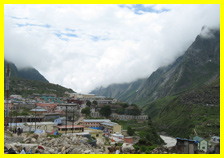
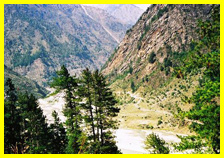
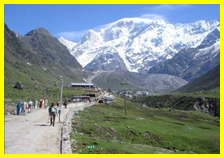
About the Yatra
The Char Dhams are open for the general public from first week of May till November depending upon the weather conditions in the region. The four shrines remain closed due to heavy snowfall in the region during December to April.
Char Dham Temples Yatra
1. Badrinath
2. Kedarnath
3. Gangotri
4. Yamunotri
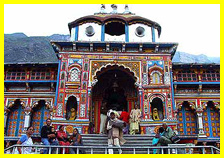 Badrinath :
Badrinath :Badrinath is one the four sacred shrines (Dham) of pilgrimage for Hindus. The other three places are Dwarka in the West, Rameshwaram in South and Puri in the East. The holy temple of Badrinath, dedicated to Lord Vishnu, is siuated on the right bank of Vishnuganga in the middle of two mountain ranges called Nar and Narayan, rising east and west respectively. The place was known as Badrivan during Puranic times because it was found carpeted by wild Berries or 'Badri' and thus Badrivan.
More about Badrinath...
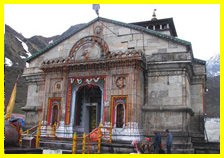 Kedarnath :
Kedarnath :The magnificent temple of Kedarnath (3581 m) one of the twelve Jyotirlingas of Lord Shiva, is dedicated to Sadashiva, a form of Lord Shiva, is situated in Garhwal Himalayas (Rudraprayag district). While huge statue of Nandi stands in the court yard, the images of Pandavas and Droupadi are skillfully carved on the wall of the temple. There are number of 'Kund' in Kedarnath Peeth. Shiv Kund is the prominent one. Rudhir Kund is known because of water being of red colour. 'Purandar Parvat' divides the area around Kedamath temple which are known as 'Narayan Kshetra' and 'Sakambhari Kshetra'.
More about Kedarnath...
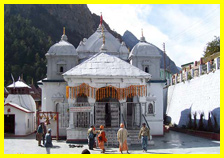 Gangotri :
Gangotri :The holy shrine of Gangotri (3,140 m) situated in the high Himalayas, is dedicated to goddess Ganga. According to legend, King Sagar, after slaying the demons on earth decided to stage in Ashwamegh Yagya as a proclamation of his supremacy. The horse which was to be taken on an uninterrupted journey around the earth was to be accompanied by the King's 60,000 sons born to Queen Sumati and one son Asmanjas born of the second queen Kesani. Indra, supreme ruler of the gods feared that he might be deprived of his celestial throne if the 'Yogya' (worship with fire) succeeded and then took away the horse and tied it to the ashram of Sage Kapil, who was then in deep meditation.
More about Gangotri...
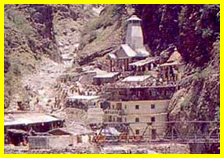 Yamunotri :
Yamunotri :The temple of Yamuna was built by Maharani Guleria of Jaipur during 19th century. It was rebuilt following its destruction during early period of the last century. The temple at Yamunotri (3,291 m) stands on the western edge of the Bandarpoochh peak (6,315 m) in Garhwal Himalayas. The sacred river of Yamuna originates from Yamnotri glaciers. Mythological Yamuna is the daughter of the Sun just like Yama who is also considered his son. It is believed that Yama would not torment any person at the time of death who bathe in Yamuna that is his sister.
More about Yamunotri...
























